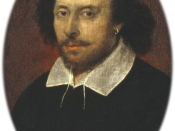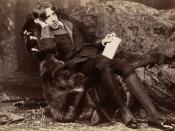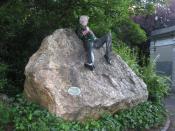- Religion and Art in Brave New World
In this utopian civilization, people are isolated from one another, divided into five different classes. The classes range from the Alphas, the Betas, the Gammas, the Deltas and finally, the Epsilons. The members of each class are ranked according to their mental capacity and physical appearance. Each class is conditioned to love their ranking; the mental inferiority is very important for the survival of the utopian society (if the lower classes become too clever they would desire to move up in the scale and that would ruin the stability of the society).
Huxley creates several criteria for the stability of the Brave New World Society. The three major ones are the banishment of art, science and religion. All of these lead to emotional, physical, or spiritual unrest and would threaten society. Thus they must be either eliminated or used sonly to help the society progress (in this case, science).
In chapters 16 and 17, John and Mustapha Mond have a discussion about the way the society is. In this conversation, Mustapha Mond explains John the banishment of art: "That's the price we have to pay for stability. You've got to choose between happiness and...art" (page 264).
"Art is the most intense mode of individualism that the world has known", said Oscar Wilde. Individualism is not allowed in the World State. Many pieces of literature are eliminated, and censorship is applied everywhere to attain stability. Without the books to give the people ideas, and with the conditioning of the mind, no one would attempt a revolution. No one in the World State would recognize the title Othello or the name William Shakespeare, no one but the people who make the rules, those are, the World Controllers, such as Mustapha Mond.



Suggestion
I would suggest you make your conclusion a little more informative- ie mention AGAIN the gist of your argument
3 out of 3 people found this comment useful.